![Sun Ra: Sleeping Beauty [VINYL] (STRUT) Sun Ra: Sleeping Beauty [VINYL] (STRUT)](https://www.teuthida.com/productImages/misc4/36405.jpg)
A soulful and serene 1979 session from Sun Ra and his Arkestra, Sleeping Beauty brings lush grooves, celestial soul, and meditative funk through gently swaying vamps, gospel-tinged chants, and sublime ensemble interplay, featuring June Tyson's luminous vocals and understated performances that reveal a rare, late-night tranquility within Ra's cosmic jazz vision.
In Stock
Quantity in Basket: None
Log In to use our Wish List
Shipping Weight: 24.00 units
EU & UK Customers:
Discogs.com can handle your VAT payments
So please order through Discogs
Sample The Album:
Sun Ra-piano, electric piano, organ, vocals
Michael Ray-trumpet, fluglehorn
Walter Miller-trumpet
Tony Bethel-trombone
Craig Harris-trombone
Vincent Chancey-french horn
Marshall Allen-alto sax, flute
John Gilmore-tenor sax, percussion
Danny Ray Thompson-baritone sax, flute
Eloe Omoe-bass clarinet, flute
James Jacson-bassoon, flute, percussion
Disco Kid-electric guitar
Richard Williams-elecric bass
Harry Wilson-vibes
Atakatune-percussion
Luqman Ali-drums
June Tyson-vocals
Click an artist name above to see in-stock items for that artist.
UPC: 4062548108170
Label: STRUT
Catalog ID: LP-STRUT-474
Squidco Product Code: 36405
Format: LP
Condition: New
Released: 2025
Country: USA
Packaging: LP
Recorded at Variety Recording Studios, i New York, New York, in June, 1979, by Mike Dacek.
Originally released in 1979 as a vinyl LP on the Saturn label with catalog code 11-1-79.
"A new edition of one of Sun Ra's most celebrated albums, Sleeping Beauty, reissued in its original artwork for the first time. Originally released in 1979 on his independent Saturn label, Sleeping Beauty captures Sun Ra and his Arkestra at their most soulful and serene. A masterclass in cosmic jazz, the album blends lush grooves, celestial soul, and meditative funk with Ra's singular spiritual vision - a sound both grounded and otherworldly. Sleeping Beauty reissued in it's original artwork for the first time, housed in a heavyweight card sleeve. Features insert with liner notes from the Arkestra's Knoel Scott and Ra expert Paul Griffiths. Remastered by Technology Works. One of Sun Ra's most celebrated albums."-Strut
"This is the great late-night Sun Ra chillout album you never knew about. The band had been working in a more groove-oriented setting off and on for over a year, as evidenced by the albums Lanquidity and On Jupiter, with both featuring prominent electric bass and electric guitar. Sleeping Beauty picks up right where On Jupiter left off, with the gentle, swaying "Springtime Again" echoing the same mellow vibe of "Seductive Fantasy" from On Jupiter.
A skittering intro coalesces as different instruments pick up bits of the melody, which is then fully expressed by the horn section and ensemble vocals. It's a simple two-chord vamp, with beautiful solos that seem to embody the reawakening and rebirth of springtime. "The Door of the Cosmos" starts with a gospel-like chant and handclaps, with comments from Ra's electric piano and electric guitar. A strong bassline enters, very reminiscent of "A Love Supreme, Pt. 1: Acknowledgement," but the accompanying chant celebrates the mysteries of the unknown rather than the universal truth of A Love Supreme. This track builds in intensity, but never loses its groove or becomes nearly as raucous as the Arkestra is sometimes known for.
"Sleeping Beauty" is the album centerpiece, taking up all of side two. Ra's beautiful electric piano gets things rolling, and the band falls into a peaceful groove before the vocals enter, led by the wonderful June Tyson. These songs are all built on the simplest of structures, and the playing from everyone is understated and sublime.
Sleeping Beauty is truly a high point in an unwieldy discography, and something of an anomaly at the same time. There's a good reason copies of this album go for several hundred dollars on the collector's market, but it really deserves a proper release so more people can hear it. Outstanding."-Sean Westergaard, All Music
Artist Biographies
• Show Bio for Sun Ra "Sun Ra (born Herman Poole Blount, legal name Le Sony'r Ra; May 22, 1914 - May 30, 1993) was an American jazz composer, bandleader, piano and synthesizer player, poet and philosopher known for his experimental music, "cosmic philosophy", prolific output, and theatrical performances. He was inducted into the Alabama Jazz Hall of Fame in 1979. For much of his career, Ra led "The Arkestra", an ensemble with an ever-changing name and flexible line-up. Born and raised in Alabama, Blount would eventually become involved in the 1940s Chicago jazz scene. He soon abandoned his birth name, taking the name Sun Ra (after Ra, the Egyptian God of the Sun) and developing a complex persona and mythology that would make him a pioneer of Afrofuturism: he claimed he was an alien from Saturn on a mission to preach peace, and throughout his life he consistently denied any ties to his prior identity. His widely eclectic and exploratory music would eventually touch on virtually the entire history of jazz, ranging from swing music and bebop to free jazz and fusion, and his compositions ranged from keyboard solos to big bands of over 30 musicians. From the mid-1950s until his death, Ra led the musical collective The Arkestra (which featured artists such as Marshall Allen, John Gilmore, June Tyson throughout its various iterations). Its performances often included dancers and musicians dressed in elaborate, futuristic costumes inspired by ancient Egyptian attire and the space age. Though his mainstream success was limited, Sun Ra was a prolific recording artist and frequent live performer, and remained both influential and controversial throughout his life for his music and persona. He is now widely considered an innovator; among his distinctions are his pioneering work in free improvisation and modal jazz and his early use of electronic keyboards. Over the course of his career, he recorded dozens of singles and over one hundred full-length albums, comprising well over 1000 songs, and making him one of the most prolific recording artists of the 20th century. Following Sun Ra's death in 1993, the Arkestra continues to perform." ^ Hide Bio for Sun Ra • Show Bio for Michael Ray "Trumpet player Michael Ray spent approximately 15 years with the Sun Ra Arkestra before he took the leap and established a band of his own, Michael Ray & the Cosmic Krewe. He had previously contributed to the sound of Kool & the Gang. While Sun Ra's outfit played free jazz, and Kool & the Gang was more of a contemporary funk outfit, Ray and his Cosmic Krewe have learned how to deliver their own type of funk to a jazz audience, as evidenced on the song "Earthrite." While the number gets the crowd moving in a big way every time during a live show, when Michael Ray & the Cosmic Krewe debuted with an eponymous release in 1994, it was decided that the mix was too much of a gamble. Evidence Music didn't include "Earthrite" on the release, although the song later found a place on Funk If I Know. In addition to leading the Cosmic Krewe, Ray still plays trumpet with the Arkestra. Tipping his hat to the late jazz visionary, Ray included a couple of Ra's numbers, "Yolinda" and "Latin Monkey," on his Funk If I Know release. Ray also played with Phish on the album Phish: A Live One, as well as on-stage, and he contributed to Surrender to the Air by Trey Anastasio. His other work includes a soundtrack for PBS. Based in New Orleans, Michael Ray & the Cosmic Krewe took home the honor of Best Funk Band in 1999 when the outfit appeared at the New Orleans Jazz & Heritage Festival. Ray actually supervises a pair of ensembles named Cosmic Krewe -- one based in the Crescent City, the other in Burlington, VT, and the surrounding region. Members of both Krewes are represented on the Funk If I Know CD."-Linda Seida ^ Hide Bio for Michael Ray • Show Bio for Walter Miller "Walter Miller - Born : February 07, 1920 in Birmingham, Alabama; Died : March 28, 2004 in Cambridge, Massachusetts. American jazz trumpeter and influential anthropologist. Played with : "Sonny Blount Band", Sun Ra (1962-1966 & 1978-1982) and others." ^ Hide Bio for Walter Miller • Show Bio for Tony Bethel Tony Bethel is credited as a trombonist on SunRa's Strange Celestial Road (1980) and appears frequently in the Arkestra's late-1970s/early-1980s lineups. Beyond album credits and listings-including the Metason Arkestra member view-specific biographical details are scarce, suggesting Bethel was one of the many talented instrumentalists active in SunRa's later ensemble phases, adding depth and nuance to the Arkestra's richly orchestrated, avant-garde tapestry. ^ Hide Bio for Tony Bethel • Show Bio for Craig Harris "Craig S. Harris (born September 10, 1953) is a jazz trombonist and composer who has been a major figure in the jazz avant-garde movement since his stint with Sun Ra in 1976. Subsequently, Harris has worked with such notable jazz artists as Abdullah Ibrahim, David Murray, Lester Bowie, Cecil Taylor, Sam Rivers, Muhal Richard Abrams and Charlie Haden. Harris has also recorded since 1983 as leader for labels like India Navigation, Soul Note and JMT. For the latter he recorded with two different groups: the Tailgaters Tails was a quintet with clarinetist Don Byron, trumpeter Edward E. J. Allen, Anthony Cox on bass and Pheeroan akLaff on drums. His large ensemble project Cold Sweat was a tribute to the music of James Brown. Harris was born in Hempstead, New York. He is a graduate of the music program of State University of New York College at Old Westbury, and was profoundly influenced by its founder and director Makanda Ken McIntyre. Harris's move to New York City in 1978 quickly established him in the forefront of young trombonists, including Ray Anderson, George Lewis and Joseph Bowie.[1] He first played alongside another of his teachers at SUNY, baritone saxophonist Pat Patrick, in Sun Ra's Arkestra for two years. Harris than embarked on a world tour with South African pianist/composer Abdullah Ibrahim (Dollar Brand) in 1981. While on tour in Australia Harris discovered the Indigenous Australian wind instrument, the didgeridoo, which he added to the collection of instruments he plays." ^ Hide Bio for Craig Harris • Show Bio for Vincent Chancey "Vincent Chancey - French Horn and Composer Over the past 25 years I have built a solid reputation as an accomplished and totally dedicated french horn player, performing in a wide variety of musical contexts, and as an increasingly active composer. My first instrument as a member of the junior high school band was the cornet and later the trumpet and fluglehorn. But after hearing the french horn during rehearsals I felt a strong affinity for that instrument and was happily able to make the change. Simultaniously with my band experience in high school, I was first active in Giles Yellow Jackets and later the St. Andrews Hornets and the DesPlaines Vanguard competitive drum & bugle corps. Through high school and college, I lived a kind of musical schizophrenia, studying and playing classical music, but listening to and loving jazz. Continuing in that direction for some time, I finally decided that I needed some instruction on how to approach jazz on this instrument. Upon graduation from the Southern Illinois University School of Music, I moved to New York to seek out and study with the long-time pioneering jazz french hornist Julius Watkins. I was able to win a N.E.A. grant to begin this study program. After several years of instruction and hard practice, I first came to prominence as a regular member of the Sun Ra Arkestra from 1976 to 1978. After that I worked sporadically for Sun Ra, making a number of recordings with the ensemble, and then worked for six years with the Carla Bley Band. In 1984, I joined Lester Bowie's Brass Fantasy and have been featured on all of the group's nine recordings. For many years, I have also been part of the David Murray Big Band in which I am featured on five CD's. I have been able to employ my talent playing with Chick Corea, Cassandra Wilson, Shirley Horn, Randy Weston, The Gil Evans Orchestra and The Mingus Orchestra. In the Contemporary Classical idiom , I have worked with Guus Janssen on varied projects in The Netherlands. I have also performed with popular artists such as Ashford and Simpson, Melba Moore, Peggy Lee, Maxwell, Aretha Franklin, Freddy Jackson, The Winans, Elvis Costello, Brandy, Charlie Haden Liberation Orchestra, Dave Douglas, singer Diana Krall and many more. In 2000 I had the honor of playing a performance for Pope John Paul II's 80th birthday concert. I have recorded as a sideman with various artist on more than 150 albums, CD's and soundtracks. Eventually I came to the point that many musicians reach when they feel the need for more personal creative expression. I began writing music that could best express myself and my instrument. I felt that no one was writing for the french horn the way I knew it could be played. Several bands were put together over many years, which lead to my first CD. This recording entitled "Welcome Mr. Chancey" was released in 1993 on In + Out Records. A quartet was featured on this album using electric guitar, bass and drums. I enjoyed working with this group, but felt that I wanted to do something closer to the music that I had always listened to as a developing jazz musician, classic jazz. I started first by composing music that I thought worked with the way I liked to play my instrument. Soon after I was asked to do a CD of music commemorating my jazz horn teacher, Julius Watkins and his group, The Jazz Modes. In 1996 I recorded my second CD "Vincent Chancey and Next Mode" on DIW records. This one featured a Quintet with tenor saxophone, piano, bass, and drums. The french horn is my natural voice. Throughout my career I have been devoted to the idea of achieving wider recognition for the horn as a jazz instrument and I have constantly sought to increase the capability of the instrument and overcome the inherent problems of adapting it to the vocabulary of jazz." ^ Hide Bio for Vincent Chancey • Show Bio for Marshall Allen "Marshall Belford Allen (born May 25, 1924) is an American free jazz and avant-garde jazz alto saxophone player. He also performs on flute, oboe, piccolo, and EVI (an electronic valve instrument made by Steiner, Crumar company). Allen is best known for his work with eccentric keyboardist/bandleader Sun Ra, having recorded and performed mostly in this context since the late 1950s, and having led Sun Ra's Arkestra since 1993. Critic Jason Ankeny describes Marshall as "one of the most distinctive and original saxophonists of the postwar era." Marshall Allen was born in Louisville, Kentucky. During the Second World War he enlisted in the 92nd Infantry Division and was stationed in France. Allen studied alto saxophone in Paris and played in Europe with Art Simmons and James Moody. He is best known for his mastery of pyrotechnic effects on the alto - he has said that he "wanted to play on a broader sound basis rather than on chords" (1971 interview with Tam Fiofori cited in). The opportunity came through his long association with Sun Ra, with whom he performed almost exclusively from 1958 to Ra's death in 1993, although he did record outside the Arkestra, notably with Paul Bley's group in 1964 and with Olatunji's group during the mid-1960s. Critic Scott Yanow has described Allen's playing as "Johnny Hodges from another dimension". Since the departure of Sun Ra and John Gilmore, Allen has led the Arkestra, and has recorded two albums as their bandleader. In May 2004, Allen celebrated his 80th birthday on stage with the Arkestra, as part of their performance at the Ninth Vision Festival in New York City. Allen gave another performance on his birthday in 2008 at Sullivan Hall in New York City. Allen often appears in NYC-area collaborations with bassist Henry Grimes and has also participated in the "Outerzone Orchestra" together with Francisco Mora Catlett, Carl Craig and others in an appreciation of Sun Ra's music." ^ Hide Bio for Marshall Allen • Show Bio for John Gilmore "John Gilmore (September 28, 1931 Đ August 19, 1995) was an avant-garde jazz saxophonist known for his tenure with keyboardist/bandleader Sun Ra from the 1950s to the 1990s. Gilmore grew up in Chicago and played clarinet from the age of 14. He took up the tenor saxophone while serving in the United States Air Force from 1948 to 1952, then pursued a musical career, playing briefly with pianist Earl Hines before encountering Sun Ra in 1953. For the next four decades, Gilmore recorded and performed almost exclusively with Sun Ra. This was puzzling to some, who noted Gilmore's talent, and thought he could be a major star like John Coltrane or Sonny Rollins. Despite being five years older than Gilmore, Coltrane was impressed with his playing, and took informal lessons from Gilmore in the late 1950s. Coltrane's epochal, protoĐfree jazz "Chasin' the Trane" was inspired partly by Gilmore's sound. In 1957 he co-led with Clifford Jordan a Blue Note date that is regarded as a hard bop classic: Blowing In from Chicago. Horace Silver, Curly Russell, and Art Blakey provided the rhythm section. In the mid-1960s Gilmore toured with the Jazz Messengers and he participated in recording sessions with Paul Bley, Andrew Hill (Andrew! and Compulsion), Pete La Roca (Turkish Women at the Bath), McCoy Tyner (Today and Tomorrow) and a handful of others. In 1970 he co-led a recording with Jamaican trumpeter Dizzy Reece. His main focus throughout, however, remained with the Sun Ra Arkestra. Gilmore's devotion to Sun Ra was due, in part, to the latter's use of harmony, which Gilmore considered both unique and a logical extension of bebop. Gilmore had stated that Sun Ra was "more stretched out than Monk" and that "I'm not gonna run across anybody who's moving as fast as Sun Ra ... So I just stay where I am." Gilmore occasionally doubled on drums and also played bass clarinet until Sun Ra hired Robert Cummings as a specialist on the latter instrument in the mid-1950s. However, tenor sax was his main instrument and Gilmore himself made a huge contribution to Sun Ra's recordings and was the Arkestra's leading sideman, being given solos on almost every track on which he appeared. In the Rough Guide to Jazz, Brian Priestley says: Many fans of jazz saxophone consider him to be among the greatest ever, his fame shrouded in the relative anonymity of being a member of Sun Ra's Arkestra. His "straight ahead post-bop" talents are exemplified in his solo on the Arkestra's rendition of "Blue Lou," as seen on Mystery, Mr. Ra. After Sun Ra's 1993 death, Gilmore led Ra's Arkestra for a few years before his own death from emphysema. Marshall Allen then took over the Arkestra leadership." ^ Hide Bio for John Gilmore • Show Bio for Danny Ray Thompson Danny Ray Thompson is a bassoon player, saxophonist and long-time member of the Sun Ra Arkestra, spanning a period from the mid-'60s to the late '80s. He has been in the groups Black Heat, The Heliosonic Tone-tette, and The Sun Ra Arkestra. ^ Hide Bio for Danny Ray Thompson • Show Bio for Eloe Omoe "Eloe Omoe, real name Leroy Taylor, was a Reed player (clarinet, bassoon, oboe) with the Sun Ra Arkestra from 1970 to 1989. Born in 1949, died in 1989." ^ Hide Bio for Eloe Omoe • Show Bio for James Jacson An early member of the Arkestra from the early 1960s through the late '90s, Jacson was known for his use of ancient instruments, woodwinds, and the Cosmic Infinity Drum carved from a tree struck by lightning-part of the ensemble's ritualistic and sonic experimentation. ^ Hide Bio for James Jacson • Show Bio for Disco Kid "Disco Kid" is credited as electric guitarist on Sleeping Beauty (1979) and Strange Celestial Road (1980) with SunRa's Arkestra. His name-clearly a pseudonym-has surfaced across multiple SunRa recordings, but no substantive biographical information or real name has been confirmed. On fan forums like Organissimo, his identity remains a matter of speculation, reflecting his enigmatic presence within Ra's cosmic ensemble. ^ Hide Bio for Disco Kid • Show Bio for Richard Williams Bassist Richard Williams appears on Strange Celestial Road (1980) and is listed among Arkestra bassists in that period. Although not as widely documented as earlier Arkestra bassists like Ronnie Boykins, Williams contributed foundational low-end support to Sun Ra's evolving sound during these later developments of the ensemble. Unfortunately, detailed personal or career biographical data remains limited. ^ Hide Bio for Richard Williams • Show Bio for Harry Wilson Harry Wilson is credited on vibraphone for Strange Celestial Road (1980) and appears on Sleeping Beauty (1979) as well. While not a household name, his inclusion in Sun Ra's late-'70s projects highlights his role in bringing melodic shimmer and percussive harmony to the Arkestra's more textured arrangements. Like many of Sun Ra's sidemen, his career details remain largely undocumented. ^ Hide Bio for Harry Wilson • Show Bio for Atakatune "Atakatune, aka Stanley Leon Morgan, Born in Philadelphia, PA in 1953, My father spent his childhood sharing time between Camden New Jersey and Philadelphia's Germantown neighborhood. It was in Germantown where he began a relationship at age 19 that would change his life forever. He first began to play the conga drums for Sun Ra's Arkestra in 1972 and would soon come to be referred to as "the premier Conga player and percussionist" under the direction of the Great Cosmic Philosopher Sun Ra." ^ Hide Bio for Atakatune • Show Bio for Luqman Ali " (born Edward Skinner; November 13, 1939 in Starkville, MS - August 19, 2007) was an American jazz drummer and multi-instrumentalist primarily known for his work with the Sun Ra Arkestra." ^ Hide Bio for Luqman Ali • Show Bio for June Tyson "June Tyson (born February 5, 1936, Albemarle, North Carolina - d. November 24, 1992, Philadelphia, Pennsylvania) was a singer and dancer who achieved prominence performing with keyboardist and bandleader Sun Ra. When she joined Sun Ra's Arkestra around 1968, she became the first female member of his band. (Sun Ra had previously recorded with a few female vocalists, but they were not members of his band.) She became a close and trusted friend of Ra, and helped him with costume design. Tyson continued to perform and record with Ra up to her death. Tyson was diagnosed with cancer and grew increasingly ill. When she was unable to sing because of her illness, she played the violin." ^ Hide Bio for June Tyson
11/5/2025
Have a better biography or biography source? Please Contact Us so that we can update this biography.
11/5/2025
Have a better biography or biography source? Please Contact Us so that we can update this biography.
11/5/2025
Have a better biography or biography source? Please Contact Us so that we can update this biography.
Have a better biography or biography source? Please Contact Us so that we can update this biography.
11/5/2025
Have a better biography or biography source? Please Contact Us so that we can update this biography.
11/5/2025
Have a better biography or biography source? Please Contact Us so that we can update this biography.
11/5/2025
Have a better biography or biography source? Please Contact Us so that we can update this biography.
Gilmore is known for two rather different styles of tenor playing. On performances of a straight ahead post-bop character (which include many of those with Sun Ra), he runs the changes with a fluency and tone halfway between Johnny Griffin and Wardell Gray, and with a rhythmic and motivic approach which he claims influenced Coltrane. On more abstract material, he is capable of long passages based exclusively on high-register squeals. Especially when heard live, Gilmore was one of the few musicians who carried sufficient conviction to encompass both approaches.
11/5/2025
Have a better biography or biography source? Please Contact Us so that we can update this biography.
Have a better biography or biography source? Please Contact Us so that we can update this biography.
11/5/2025
Have a better biography or biography source? Please Contact Us so that we can update this biography.
Have a better biography or biography source? Please Contact Us so that we can update this biography.
Have a better biography or biography source? Please Contact Us so that we can update this biography.
Have a better biography or biography source? Please Contact Us so that we can update this biography.
Have a better biography or biography source? Please Contact Us so that we can update this biography.
11/5/2025
Have a better biography or biography source? Please Contact Us so that we can update this biography.
11/5/2025
Have a better biography or biography source? Please Contact Us so that we can update this biography.
11/5/2025
Have a better biography or biography source? Please Contact Us so that we can update this biography.
Track Listing:
SIDE A
1. Springtime Again 9:12
2. Door Of The Cosmos 8:53
SIDE B
1. Sleeping Beauty 11:48
Vinyl Recordings
Improvised Music
Jazz
Jazz & Improvisation Based on Compositions
Melodic and Lyrical Jazz
Large Ensembles
Sun Ra
Jazz Reissues
Staff Picks & Recommended Items
New in Improvised Music
Recent Releases and Best Sellers
Search for other titles on the label:
STRUT.


![Sun Ra: Sleeping Beauty [VINYL] (STRUT) Sun Ra: Sleeping Beauty [VINYL] (STRUT)](https://www.teuthida.com/productImages/full/36405.Full.jpg)
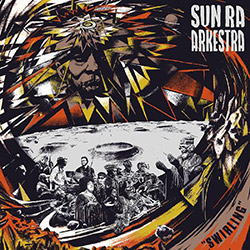
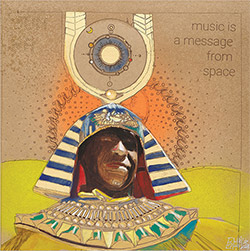

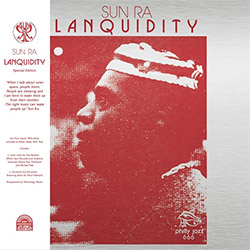
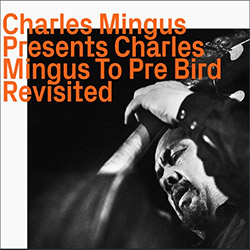
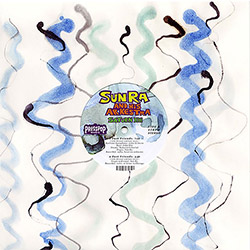

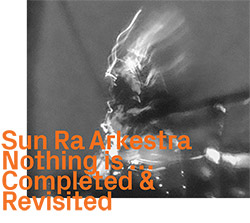
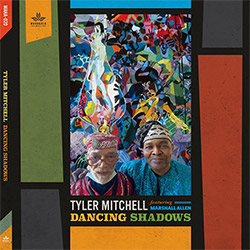
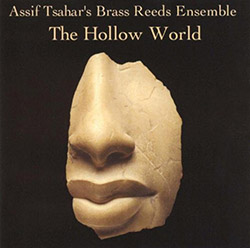
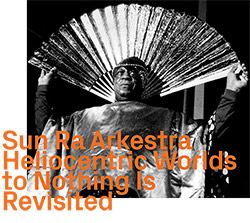
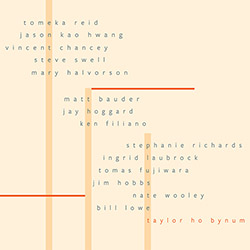
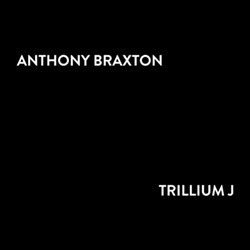
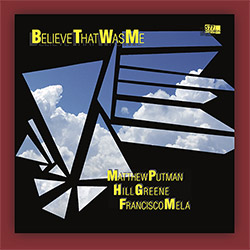
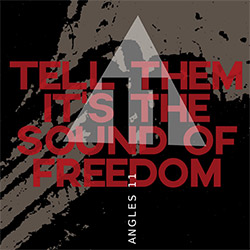
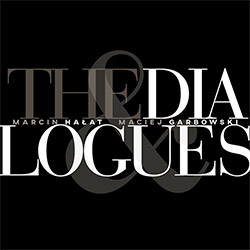

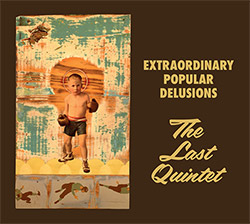

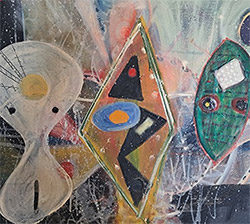
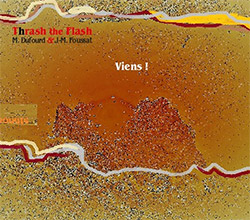
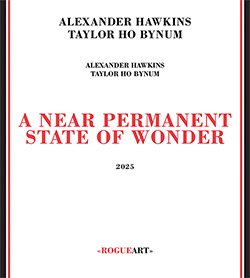
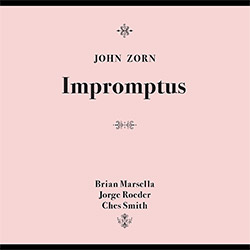

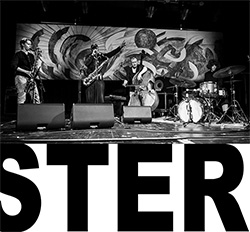

![Talmor, Ohad w/Chris Tordini / Eric Mcpherson + Guests: Back To The Land [2 CDs]](https://www.teuthida.com/productImages/misc4/35237.jpg)
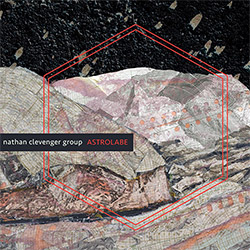

![Turbulence Orchestra & Sub-Units: Crescendo of the Tempest [2 CDs]](https://www.teuthida.com/productImages/misc4/36913.jpg)
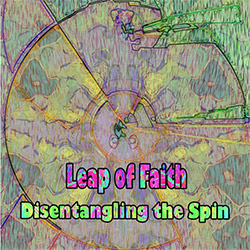
![McCaslin, Donny: Lullaby For The Lost [VINYL]](https://www.teuthida.com/productImages/misc4/36681.jpg)
![Ellis, Don: The 1960s Albums [4 CD BOX SET]](https://www.teuthida.com/productImages/misc4/36682.jpg)
![Cherry, Don / Krzysztof Penderecki: Actions [VINYL 180g]](https://www.teuthida.com/productImages/misc4/36739.jpg)
![Webber/Morris Big Band: Unseparate [VINYL 2 LPs]](https://www.teuthida.com/productImages/misc4/36759.jpg)
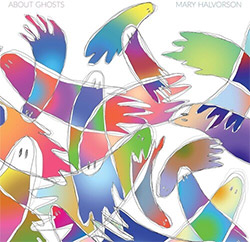

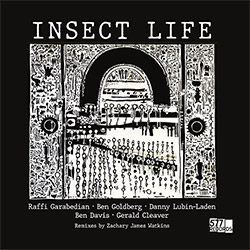
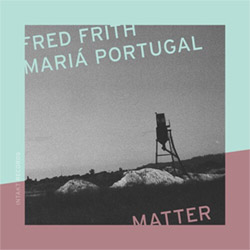
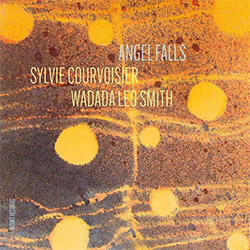
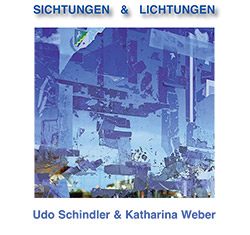
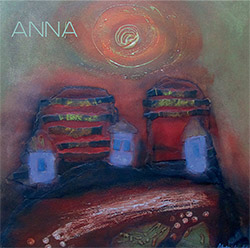
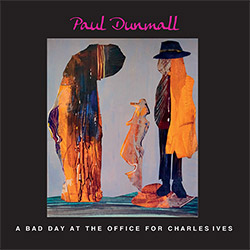
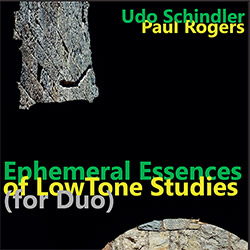
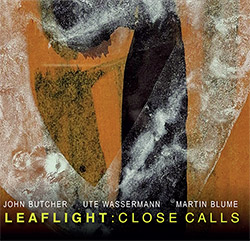

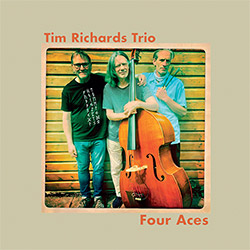

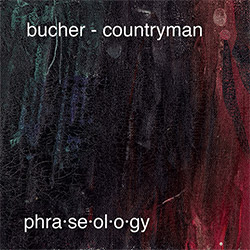
![Eubanks, Bryan: Songbook [VINYL w/ DOWNLOAD]](https://www.teuthida.com/productImages/misc4/36865.jpg)
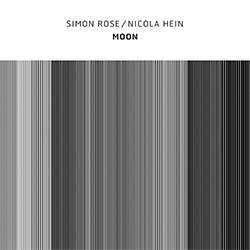

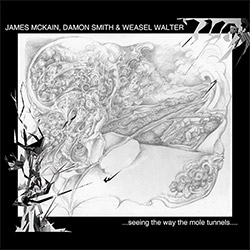
![Toeplitz, Kasper T.: Erosions Programmees [CD + BOOKLET]](https://www.teuthida.com/productImages/misc4/36639.jpg)
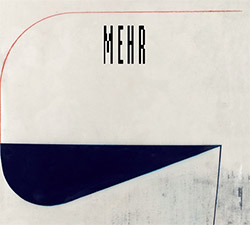
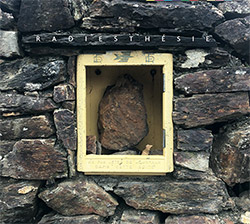
![Le UN (Agnel / Battus / Chiesa / Doneda / Gauget / Marchetti / Petit): Le Havre [VINYL + CD]](https://www.teuthida.com/productImages/misc4/36643.jpg)

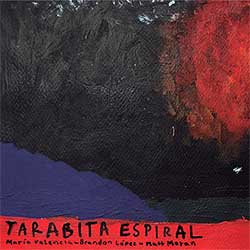
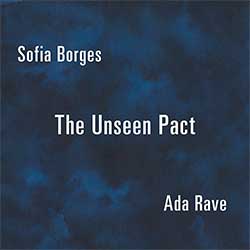
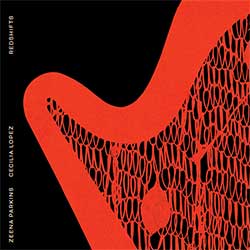
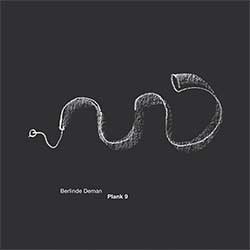
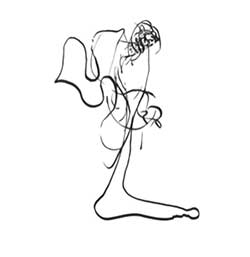
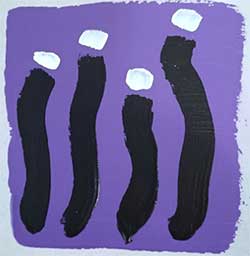
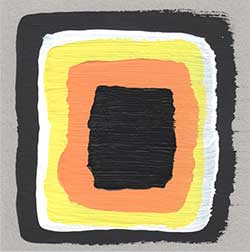
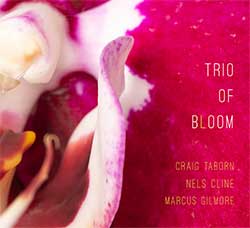
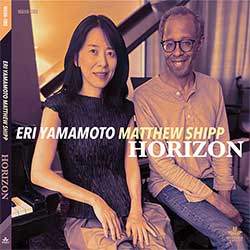
![Genthon, Anouck / Lionel Marchetti: Suite Blanche [2 CDs]](https://www.teuthida.com/productImages/misc4/36642.jpg)
![Gate, The : Amost Live [CASSETTE + MAGAZINE]](https://www.teuthida.com/productImages/misc4/36836.jpg)
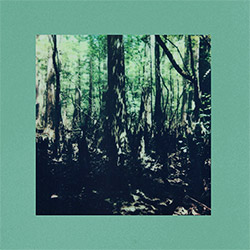
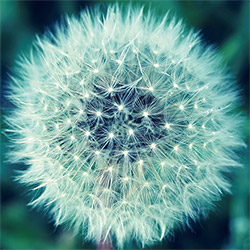
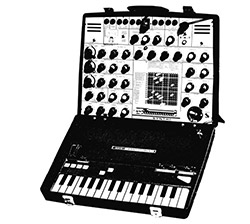
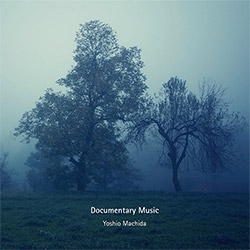
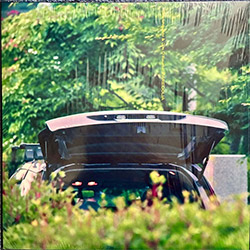
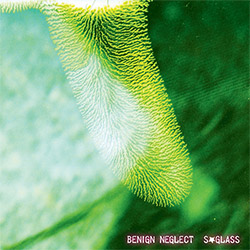
![A Magic Whistle: The Solar Cell [VINYL]](https://www.teuthida.com/productImages/misc4/36658.jpg)
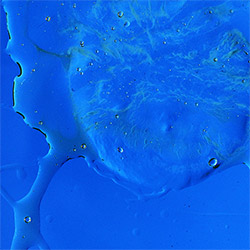
![McGee, Hal: Columbus Expedition [Cassette w/ Download]](https://www.teuthida.com/productImages/misc4/36650.jpg)
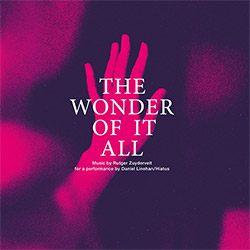

![Jaeger, Kassel: Fernweh [VINYL 2 LPs]](https://www.teuthida.com/productImages/misc4/36541.jpg)
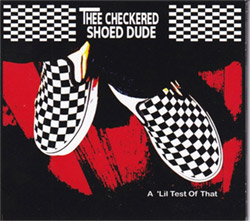
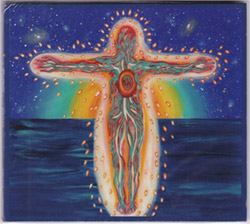
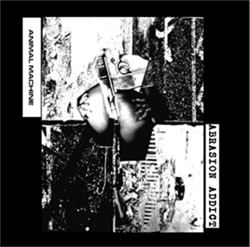
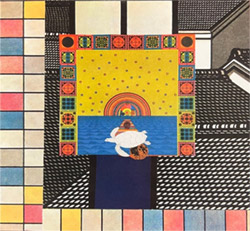

![+DOG+: The Light Of Our Lives [2 CDs]](https://www.teuthida.com/productImages/misc4/36009.jpg)
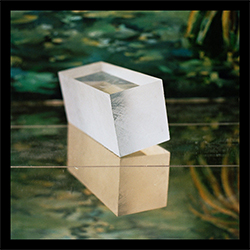
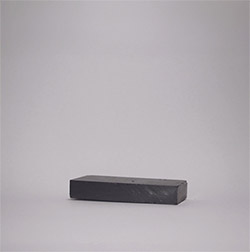
![Eternities: Rides Again [CASSETTE]](https://www.teuthida.com/productImages/misc4/36247.jpg)
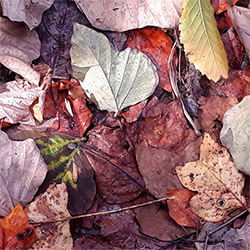
![Lopez, Francisco: Untitled (2021-2022) [2 CDs]](https://www.teuthida.com/productImages/misc4/36438.jpg)

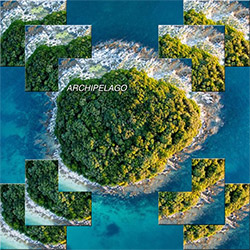
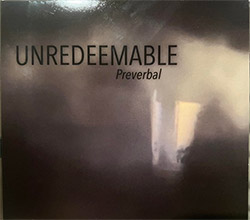
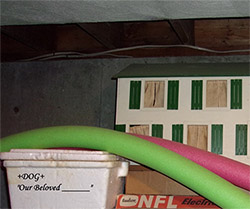
![Pisaro-Liu, Michael: Within (2) / Appearance (2) [2 CDs]](https://www.teuthida.com/productImages/misc4/36831.jpg)
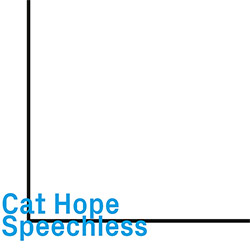
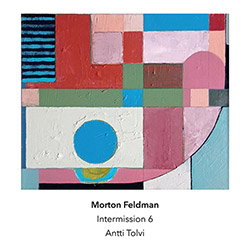
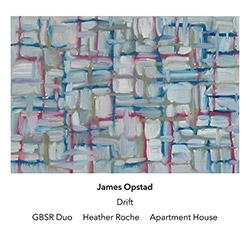
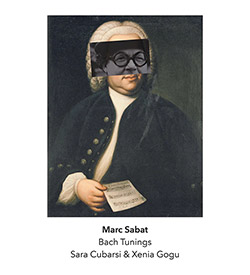
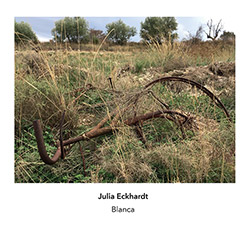
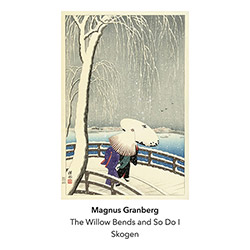
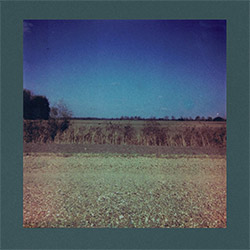
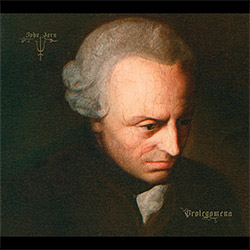
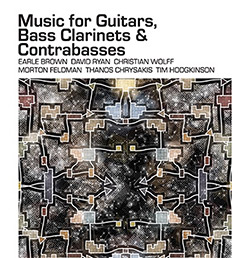

![Musicworks Magazine: #151 Summer 25 [MAGAZINE + CD]](https://www.teuthida.com/productImages/misc4/36559.jpg)
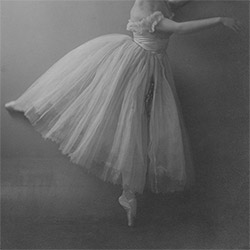
![Brown, Dan / Dan Reynolds: Live At The Grange Hall [unauthorized][CASSETTE]](https://www.teuthida.com/productImages/misc4/36245.jpg)
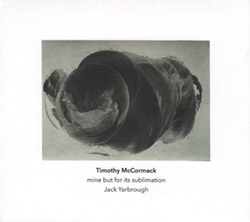
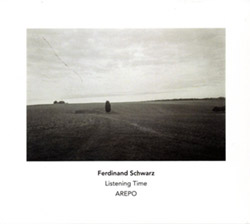
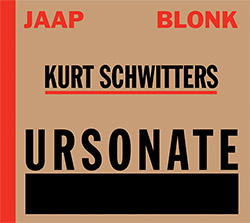
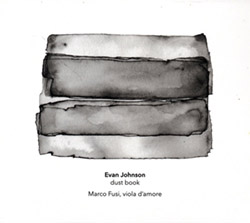
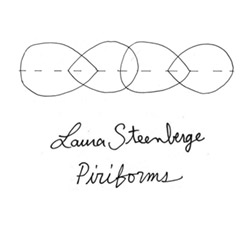
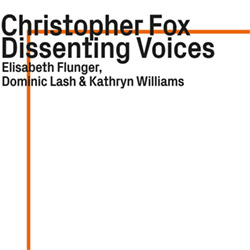
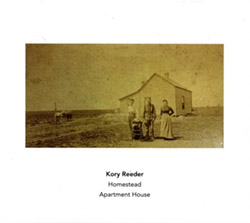
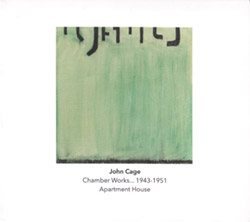
![Palestine, Charlemagne / Seppe Gebruers: Beyondddddd The Notessssss [VINYL]](https://www.teuthida.com/productImages/misc4/36206.jpg)
![Palestine, Charlemagne / Seppe Gebruers: Beyondddddd The Notessssss [NEON GREEN VINYL]](https://www.teuthida.com/productImages/misc4/36207.jpg)
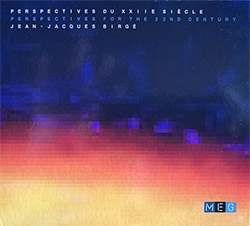
![Laubrock, Ingrid: Purposing The Air [2 CDs]](https://www.teuthida.com/productImages/misc4/35639.jpg)
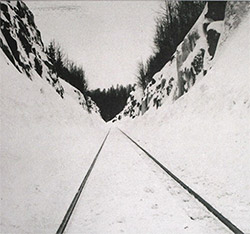
![Yoko, Ono / The Great Learning Orchestra: Selected Recordings From Grapefruit [2 CDs]](https://www.teuthida.com/productImages/misc4/35841.jpg)
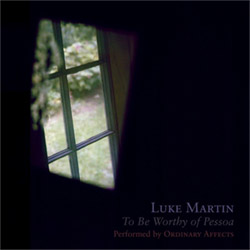
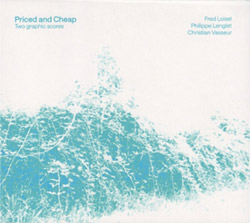
![Halls Of the Machine: All Tribal Dignitaries [CASSETTE w/ DOWNLOAD]](https://www.teuthida.com/productImages/misc4/36134.jpg)
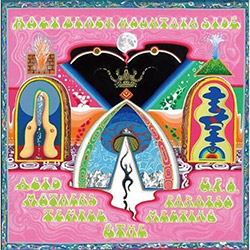
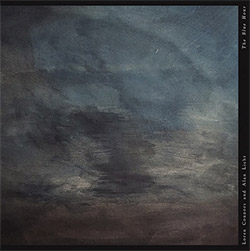
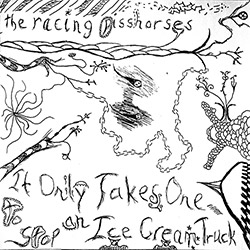
![Koenjihyakkei: Live at Club Goodman [2 CDs]](https://www.teuthida.com/productImages/misc4/36111.jpg)
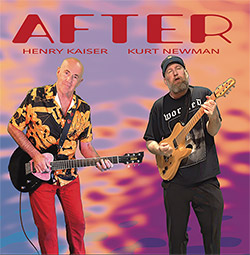
![Sorry For Laughing (G. Whitlow / M. Bates / Dave-Id / E. Ka-Spel): Rain Flowers [2 CDS]](https://www.teuthida.com/productImages/misc4/35985.jpg)
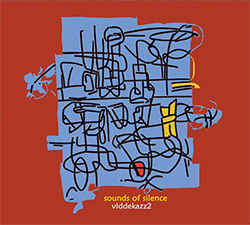
![Rolando, Tommaso / Andy Moor : Biscotti [CASSETTE w/ DOWNLOADS]](https://www.teuthida.com/productImages/misc4/36106.jpg)
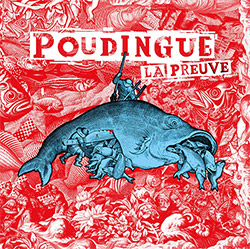
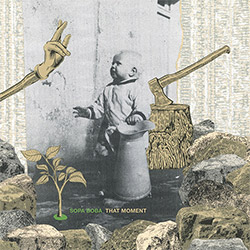
![Electric Bird Noise / Derek Roddy: 8-10-22 [CD EP]](https://www.teuthida.com/productImages/misc4/35970.jpg)
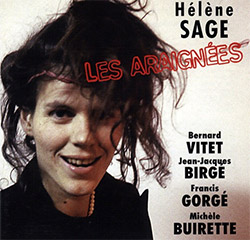

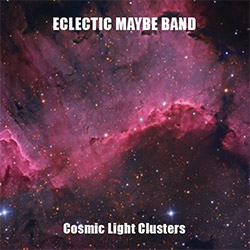
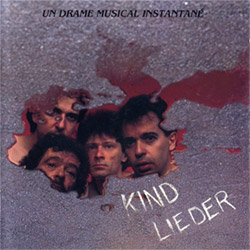
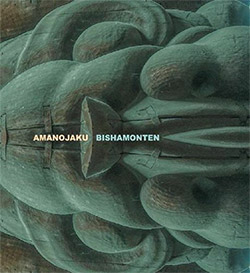
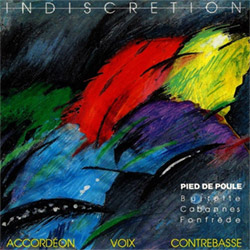
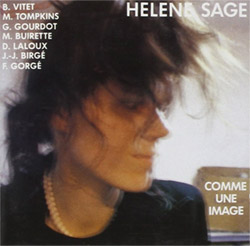

![Elephant9 : Mythical River [VINYL]](https://www.teuthida.com/productImages/misc4/34624.jpg)
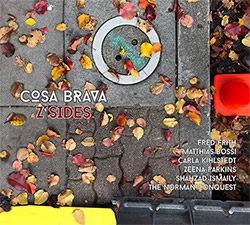
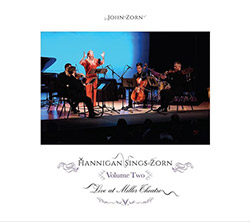

![Elephant9 with Terje Rypdal: Catching Fire [VINYL 2 LPs]](https://www.teuthida.com/productImages/misc4/35355.jpg)
![Deerlady (Obomsawin, Mali / Magdalena Abrego): Greatest Hits [VINYL]](https://www.teuthida.com/productImages/misc4/34876.jpg)
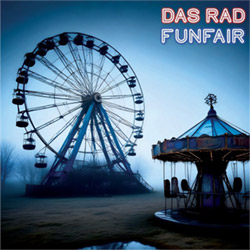
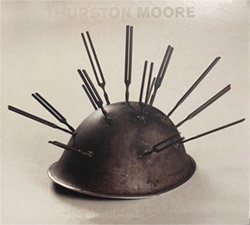
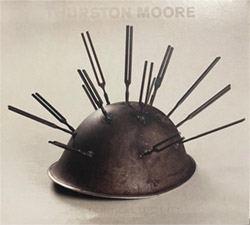
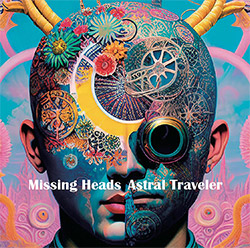
![Coley, Byron: Dating Tips for Touring Bands [VINYL]](https://www.teuthida.com/productImages/misc4/17906.jpg)

![Lost Kisses: My Life is Sad & Funny [DVD]](https://www.teuthida.com/productImages/misc4/lostKissesDVD.jpg)